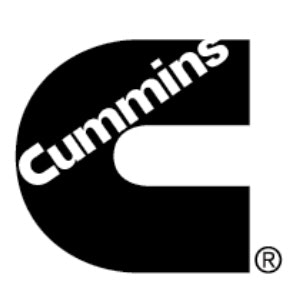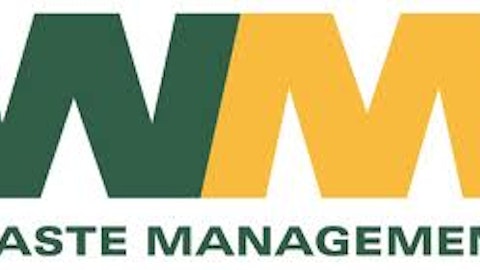It’s a well known fact that with the growing environmental concerns, the demand for clean energy is rising. In fact, the U.S government is promoting the use of clean energy, so that the crude surplus increases, leading to a rise in crude exports, which will eventually improve its trade deficit. Although Tesla Motors Inc (NASDAQ:TSLA) is doing a fine job in providing an emission free mode of travel, the truth is that electric engines can’t be deployed in industrial scale vehicles (yet).
However, natural gas has the required calorific value and low prices to power large scale engines at an economically viable operating cost. Hence, the term “Natural Gas Vehicles” is rapidly getting popular. From what I can see, there are broadly three ways to profit from the booming NGVs.
An engine manufacturer
One of the prime beneficiaries of this paradigm shift is Cummins Inc. (NYSE:CMI). The company designs, manufactures and distributes mainly diesel and electric engines in over 200 countries. In order to take advantage of the gradual shift to natural gas, Cummins Inc. (NYSE:CMI) and Westport Innovations Inc. (USA) (NASDAQ:WPRT) came together in 2001, to form Cummins-Westport.
Westport Innovations Inc. (USA) (NASDAQ:WPRT) designs and optimizes natural gas engines, and the joint venture has allowed Cummins Inc. (NYSE:CMI) to manufacture NGVs without in-depth technical expertise. This has not only diversified Cummins Inc. (NYSE:CMI)’s portfolio, but also positioned it well with the evolving NGV industry.
Although there are other NGV manufacturers, Cummins-Westport currently dominates the North American industry with a 90% market share. To extend its lead, Cummins-Westport recently unveiled its 11.9 liter, ISX 12G engine, that can operate on either CNG or LNG.
By introducing practical and efficient engines, the management of Cummins Inc. (NYSE:CMI) expects natural gas vehicles to account up to 10% of the total highway market by 2023. Consdering Cummins-Westport is already the market leader in NGV production, it’s not hard to conclude that both the companies will immensely benefit from the booming NGVs.
NGV designer
However, since Westport Innovations Inc. (USA) (NASDAQ:WPRT) doesn’t manufacture engines and does the designing part, it has to rely on an engine manufacturer to generate its revenues. The company signed a deal with General Motors last year, under which Westport Innovations Inc. (USA) (NASDAQ:WPRT) will provide its technical expertise to manufacture light duty natural gas engines.
These light duty engines are mainly deployed in pickup trucks, which are meant for domestic uses. But despite the low prices of natural gas, the sales of these pickup trucks have failed to reach impressive levels. This is because, these natural gas fired trucks cost more than diesel trucks, and the lack of refuelling stations acts like an entry barrier for its widescale adoption.
As refuelling infrastructure develops, these pickup trucks might gain mass attention in the future. But until that happens, I don’t think that Westport Innovations Inc. (USA) (NASDAQ:WPRT) can make a dent in the domestic transportation industry. But there are always better options available in the market.
Waste recycler
Waste Management, Inc. (NYSE:WM) has been the frontrunner in adopting alternative fuel trucks, and currently operates with the largest NGV fleet in the U.S. The waste recycler had around 1,000 NGV trucks in 2011, which has quickly swelled up to 2,000 NGV trucks in 2013. The company started switching to alternative fuels back in 2009, but it was only recently that it accelerated its shift towards cleaner fuels.
Although the company operates with over 21,000 collection vehicles and NGV vehicles account for less than 10% of its fleet, its management stated last year that NGVs will account for 80% of its fleet by 2017. This aggressive target calls for an addition of nearly 15,000 NGVs, which will play a vital role in improving Waste Management, Inc. (NYSE:WM)’s profitability.
According to its management, these NGV trucks cost around $30,000 and return almost 90% of their value as annual fuel savings. This means that once NGVs account to 80% of its entire fleet, Waste Management will be able to save roughly $400 million from 2017 onward. This is a massive positive for the company, as these cost savings will increment Waste Management 2012 net income of $814 million by nearly 50%.
Conclusion
In my opinion, investors should stay distant from Westport Innovations Inc. (USA) (NASDAQ:WPRT) for now. It doesn’t have any significant positive triggers, and the rising competition in the NGV designing industry could make matters worse.
However, Waste Management appears to be a good investment option. It is a defensive play, with stable and consistent cash inflows. And if it succeeds in deploying natural gas fired trucks on its targeted scale, its return on equity, free cash flows and net income could simply skyrocket.
Meanwhile, Cummins Inc. (NYSE:CMI) is also poised to grow with the booming NGVs. Its diversified portfolio adds stability to revenues, while its technologically advanced offerings have successfully captured most of the NGV market.
So, in short, buy Cummins and Waste Management and avoid Westport Innovations.
Piyush Arora has no position in any stocks mentioned. The Motley Fool recommends Cummins, Waste Management, and Westport Innovations. The Motley Fool owns shares of Cummins, Waste Management, and Westport Innovations. Piyush is a member of The Motley Fool Blog Network — entries represent the personal opinion of the blogger and are not formally edited.
Copyright © 1995 – 2013 The Motley Fool, LLC. All rights reserved. The Motley Fool has a disclosure policy.



